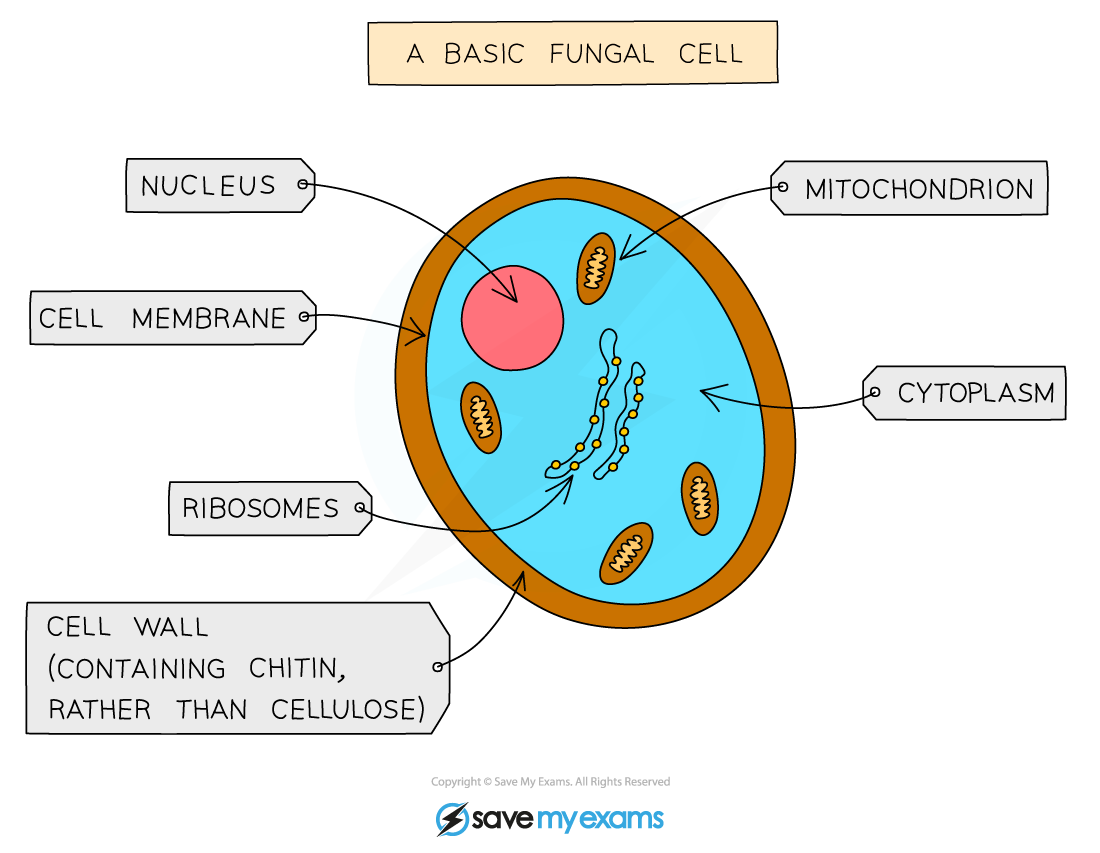Fungal and Bacterial cells (SQA National 5 Biology): Revision Note
Exam code: X807 75
Fungal cell ultrastructure
Fungi are usually multicellular, but some are single-celled, e.g. yeast
Fungal cells share many features with animal and plant cells, including:
nucleus
cell membrane
cytoplasm
mitochondria
ribosomes
Fungal cells also have a cell wall, though fungal cell walls have a different structure to plant cell walls
Their cells do not contain chloroplasts, so they cannot carry out photosynthesis

Examiner Tips and Tricks
You need to know that fungal cell walls are different in structure to plant cell walls, but do not need to know their chemical composition.
Bacterial cell ultrastructure
Bacterial cells vary widely in shape and size
Bacterial cell ultrastructure includes the following:
a cell wall that differs in structure from plant cell walls
cell membrane
cytoplasm
ribosomes
a single, circular DNA molecule
plasmids
Crucially, bacterial cells lack any internal structures that are surrounded by a membrane, so they do not contain, e.g. a nucleus or mitochondria

Examiner Tips and Tricks
You need to know that bacterial cell walls are different in structure from plant cell walls, but you do not need to know their chemical composition.

Unlock more, it's free!
Did this page help you?